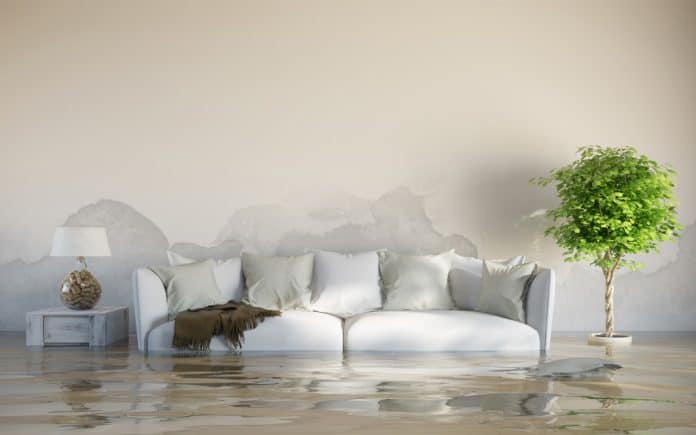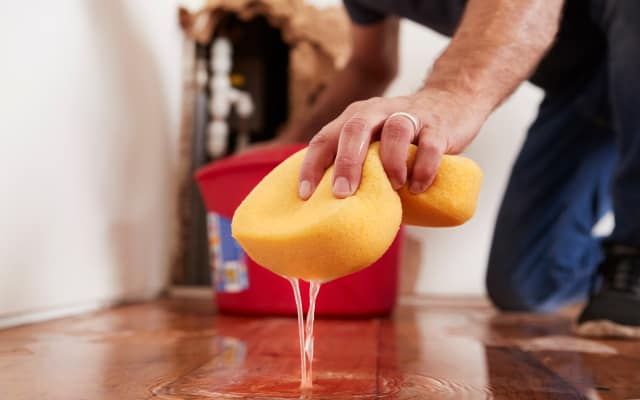As global warming continues to change weather patterns and cause more frequent and intense storms, there’s an increased risk of water damage caused by flooding. Even an inch of water finding its way into your home can instantly cause expensive and extensive water damage.
Aside from potential structural damage, your home may also be prone to mold outbreaks that can ruin your furnishings and pose health issues for you and your family. Mold is a fungus that thrives in dark, moisture-rich places. They’re a common consequence of water damage due to the excessive moisture that allows them to grow.
After a flood, it’s possible that the moisture won’t entirely evaporate due to the weather being too humid or damp. As a result, water is absorbed by porous materials. As a result, some home furnishings stay damp, allowing mold to grow.
In general, mold growth can occur within 24 to 48 hours of flooding. This means you have a tiny window to remove excess moisture in structural materials to avoid mold in your home. Fortunately, there are steps you can take to prevent mold growth after flooding in your area.
Steps To Prevent Mold Breakout
1. Clean Flooded Areas
When flooding occurs, you need to act fast. The longer the floodwater stays in your home, the more damage it creates. So, start cleaning the area within 48 hours of the flooding, as long as you can safely do so. However, before you start the cleaning process, make sure to wear the right safety equipment:
- Rubber boots
- Gloves
- Goggles
- N-95 mask
Inspect your home and check every room and exterior surface for water, leaks, and spills. Once you’ve identified flooded areas, start cleaning and removing excess water using a wet and dry vacuum cleaner.
If you don’t have a vacuum cleaner, you can visit your local hardware shop to see if they rent one. A much better option is to hire a provider like Water Damage Specialist to help you, especially if you’re dealing with a large area or your entire home.
If you see pooling water outside your home, especially near your foundation, it’s best to remove it immediately. To prevent water from pooling, you’ll need to fix the grade, add a French drain or extend your downspout.
2. Remove Damp Furnishings
Any damp items should be removed and allowed to air dry outside. This can help prevent mold from spreading, especially for carpets and furniture pieces like sofas, which can trap moisture. Not only can a damp carpet provide a suitable environment, but it’s also filled with dust and other organic debris that mold can feed on.
In terms of flooring, it’s possible to dry it using dry rags and household items such as baking soda. However, in case of extreme water damage, it may be better to remove and replace the affected flooring. Consult with a water damage restoration on the right solution for flooded floors.
3. Dehumidify
It’s best to dehumidify your home during or after removing excess water and moisture. If the weather is good outside, you can open all the windows and doors in your home. Additionally, you can turn on all available fans to help air-dry flooded areas. This can help speed up the drying process.
For better results, use a dehumidifier in and around any flooded areas in your home. Dehumidifying machines draw moist and warm air in, generating drier and cooler air into your home. This step creates a less habitable environment for mold growth while improving air quality.
4. Disinfect Everything
After taking several steps to remove and dry the affected area, the next step is to start sanitizing every water-damaged area, surface, and material to eliminate bacterial growth and prevent further damage.
You can use a steam cleaner for your beds, sofa, carpet, and other furniture. It would help if you left them exposed to the sun for a few hours to kill germs and bacteria. This also helps in drying out the items.
You can use disinfectant sprays over your furniture to ensure a cleaner surface. On the other hand, you can use water and soap to clean surfaces like walls and floors. In addition, you can sanitize them using a water-chlorine solution or a disinfectant spray.
Takeaway
Storm season brings the threat of heavy rains and flooding. If flooding isn’t resolved correctly, the unwanted growth of mold and mildew may occur. So, when restoring your home, ensure to take each step to help protect your property from the hazards that mold can create.




